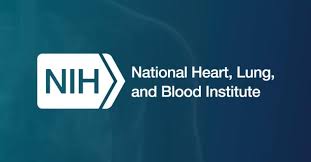Lewis-Medical Nursing Management Summary
1/32
There's no tags or description
Looks like no tags are added yet.
Name | Mastery | Learn | Test | Matching | Spaced |
|---|
No study sessions yet.
33 Terms
What are common clinical problems for a patient with hypertension?
Altered blood pressure, body weight problem, difficulty coping, health maintenance alteration, impaired cardiac function, impaired sexual function, inadequate tissue perfusion, nutritionally compromised.
What is the main focus of nursing care for patients with hypertension?
Maintaining blood pressure (BP) at a level that decreases complications and supporting the patient to manage a complicated drug regimen.
List the overall goals for a patient with hypertension.
Achieve and maintain the goal BP; 2) have minimal side effects of therapy; 3) manage and cope with the condition.
What are primary prevention strategies for hypertension?
Lifestyle modifications including following the Mediterranean or DASH diet and reducing sodium intake.
How does the food industry help prevent hypertension?
By reducing the amount of salt in processed foods.

What role does the National Heart, Lung, and Blood Institute play in hypertension prevention?
Provides web-based educational materials in various languages to raise awareness about the dangers of high BP.
What factors should be included in a health assessment for hypertension?
Age, gender, diet history, weight patterns, tobacco use, family history of cardiovascular disease, renal disease, and diabetes.
What is crucial for accurate blood pressure measurement?
Proper size and correct placement of the BP cuff.
How should a BP cuff be placed for measurement?
Snugly around the bare upper arm, aligned with the brachial artery.
What is an auscultatory gap?
A wide gap between the first Korotkoff sound and subsequent beats, indicating a necessity for proper cuff inflation.
What should you assess in terms of postural changes in BP?
Assess for orthostatic changes in BP and heart rate in certain populations, including older adults and those taking antihypertensive drugs.
What qualifies as orthostatic hypotension?
A decrease of 20 mm Hg or more in SBP, a decrease of 10 mm Hg or more in DBP, or an increase in HR of 20 beats/min upon standing.
What should be evaluated for when taking BP measurements in older adults?
Potential orthostatic hypotension or acute kidney injury.
What are common causes of resistant hypertension?
Improper BP measurements, inadequate drug doses, poor adherence, white coat syndrome, volume overload, and various medications.
What should be included in patient education for home BP monitoring?
Use a validated device, record measurements consistently at the same time of day, and bring records to appointments.
What characteristics define hypertensive crisis?
Systolic BP greater than 180 mm Hg and/or diastolic BP greater than 120 mm Hg.
What is the difference between hypertensive urgency and emergency?
Urgency has no evidence of target organ disease; emergency includes evidence of target organ damage.
What are common clinical manifestations of hypertensive encephalopathy?
Severe headache, nausea, vomiting, seizures, confusion, and coma.
What nursing interventions should be taken during a hypertensive emergency?
Obtain baseline vital signs, start continuous BP and ECG monitoring, insert IV, and administer IV antihypertensive medications.
What is the initial goal for mean arterial pressure (MAP) in hypertensive emergencies?
Decrease MAP by no more than 20% to 25% or to a target of 110 to 115 mm Hg.
What can cause a worsening hypertensive crisis if treated too rapidly?
A rapid decrease in BP may lead to decreased cerebral, coronary, or renal perfusion.
What common drugs are used for hypertensive emergencies?
Sodium nitroprusside, fenoldopam, nicardipine, phentolamine, labetalol, esmolol, and clevidipine.
What should T.B's teaching regarding medication adherence include?
The importance of understanding his medication plan and the implications of his circumstances on adherence.
What dietary counseling should be provided to a patient with hypertension?
Adopt a low-sodium, DASH diet.
What are the expected outcomes for patients with hypertension?
Achieve and maintain goal BP, understand and implement the treatment plan, and report minimal side effects.
Which factors influence medication adherence in hypertensive patients?
Health literacy, drug side effects, financial constraints, and lack of social support.
What can be effective in promoting adherence among patients managing hypertension?
Involving patients in choosing their drugs and simplifying their regimen with combination drugs.
What is recommended for patients transitioning to home management after a hypertensive crisis?
Educate about home monitoring and the importance of follow-up care.
What can be a significant issue for older adults taking antihypertensive medications?
Orthostatic hypotension due to baroreceptor reflex impairment.
How should medications be managed for older adults with hypertension?
Start at low doses and increase slowly to reduce the risk of adverse effects.
What role does patient education play in managing hypertension?
It helps to ensure adherence, understanding of BP readings, and awareness of side effects.
What should patients know about the side effects of antihypertensive drugs?
They might include sexual dysfunction, fatigue, or dizziness, and should be reported to healthcare providers.
What is one common psychological factor affecting adherence to hypertension treatment?
Grief or loss of a partner can deteriorate medication adherence and patient engagement.